Since all our transmittered curlews left Idaho, I’ve watched their movements with excitement as it seems that every week or two something unexpected happens. It’s already been an eventful non-breeding season in terms of challenges faced by our curlews:
- Ada met her end soon after arriving to the Merced area of California in late July
- Curley, the first curlew to migrate (early June) then passed away in late September (her remains were found in an alfalfa field and we were unable to determine cause of death). She had spent her first 1.5 months in California (mid-June to late July) bouncing around agricultural lands between Fresno and Bakersfield before jumping to an area south of Bakersfield in late July (see below).
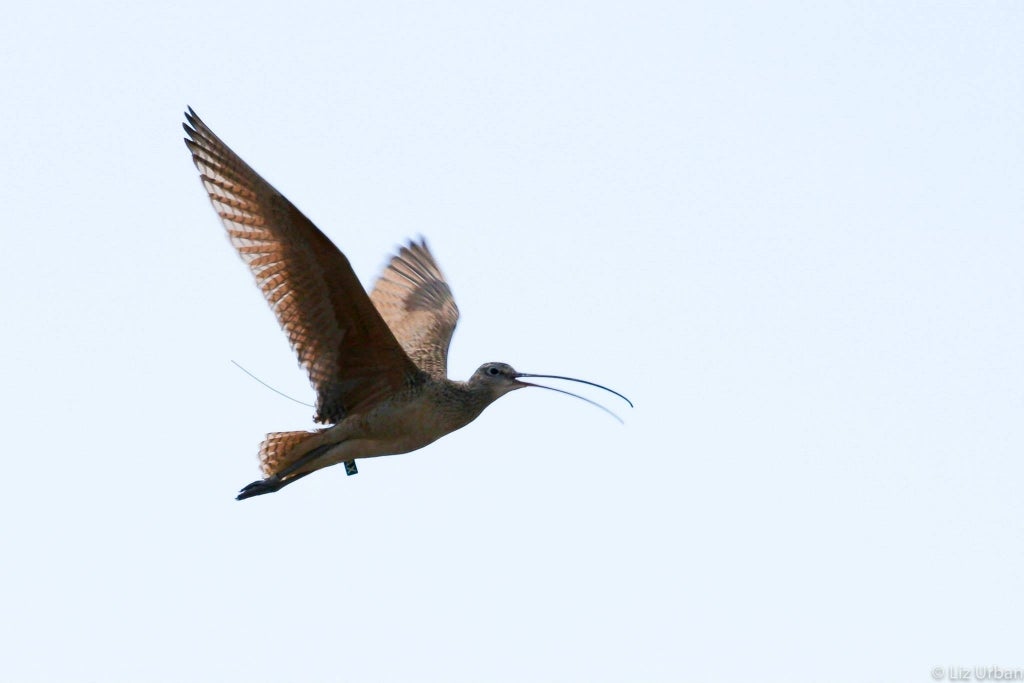
Curley defending her chicks on the day they hatched. Photo by Liz Urban
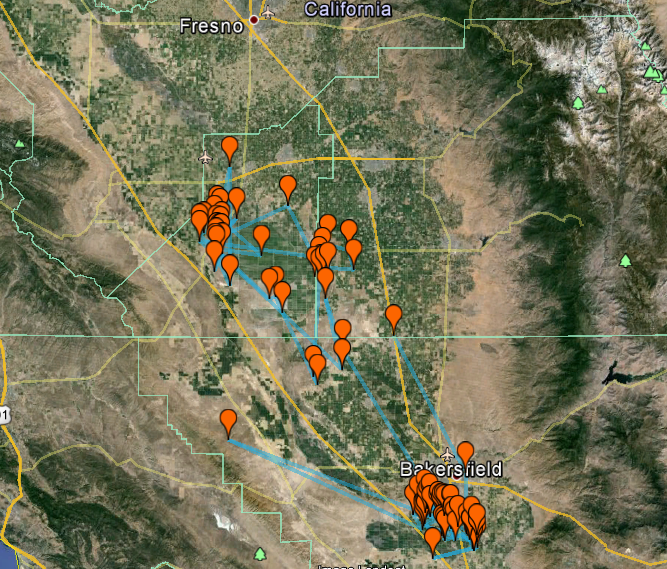
Thus, since late September we’ve been following the two remaining birds, Borah and Emmett, both males, and hoping they’d survive and keep teaching us. Watching Borah hadn’t been too exciting because he was staying put in a big way – in 4 months he hardly moved 500 meters since arriving at the mouth of the Colorado River in the Gulf of California. Specifically, he was spending time on Isla Montague, a rich delta environment that, according to a few Mexican colleagues I’ve been able to communicate with, supports HUGE numbers of shorebirds.
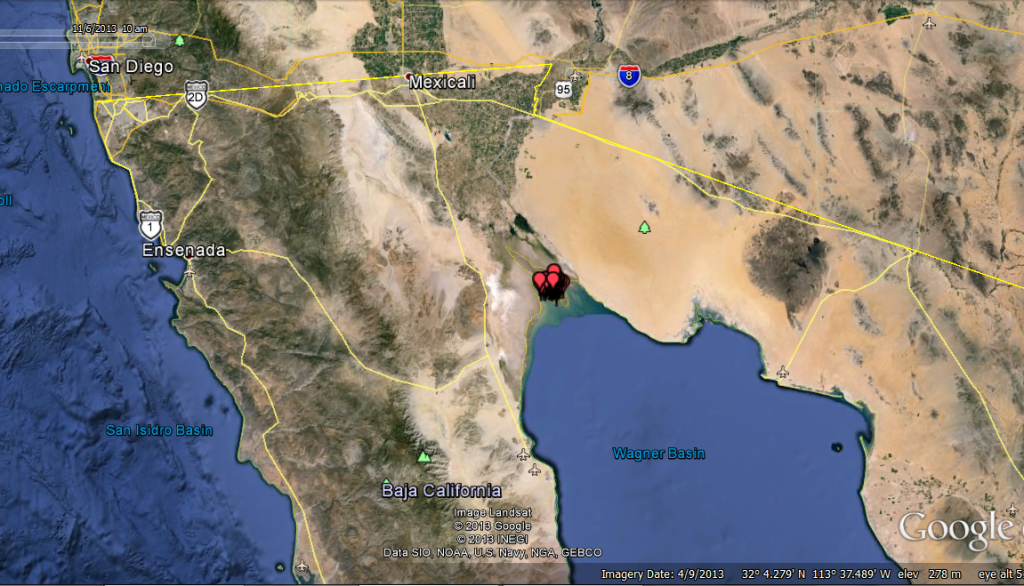
Meanwhile, Emmett had been exhibiting a little more wanderlust – spending a lot of time south of Fresno before moving up to the Los Banos area and undergoing more short-distance movements in each area (see below)
Then, almost simultaneously, both males made relatively long flights to the northwest:
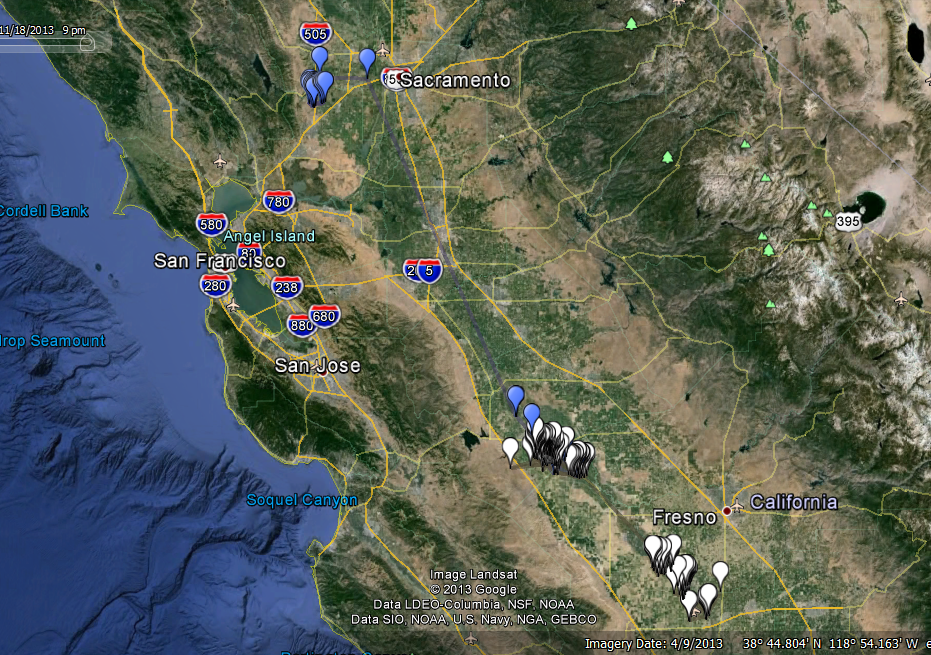
On November 6th, Emmett started with a short hop and then gradually made his way to an area west of Sacramento – over 200km from where he’d been.
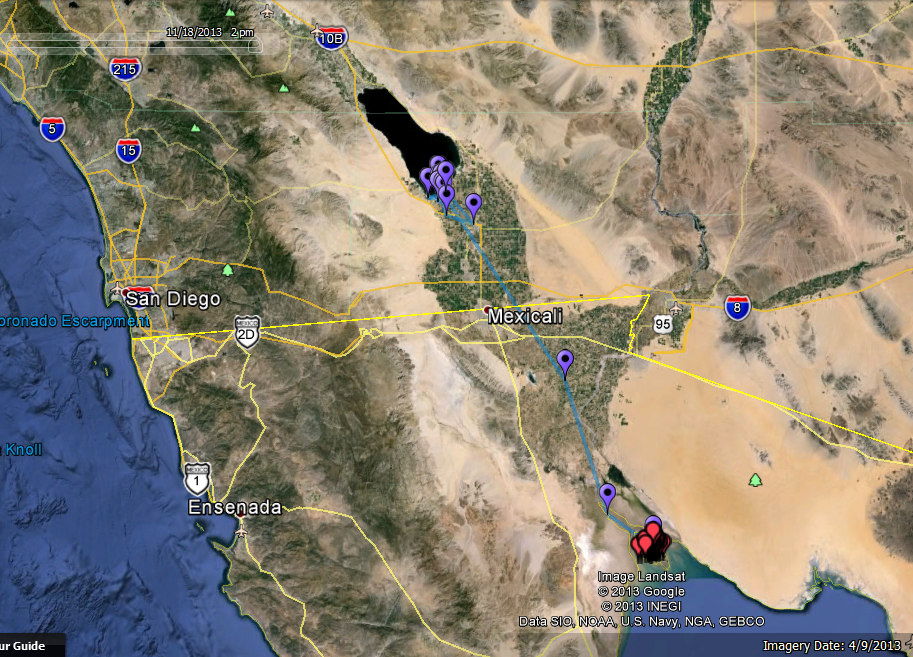
On November 8th, Borah started moving northwest and has seemingly settled at the southern end of the Salton Sea – about 175km from where he’d been.
So, why did both birds suddenly shift wintering areas in early November? We don’t expect them back in Idaho until mid-March at the earliest. Did something change in terms of food availability simultaneously in both areas (seems unlikely given that Borah’s been in an estuarine environment and Emmett in grasslands and agriculture) or is there some internal clock that causes both birds, and presumably the flocks they are wintering with, to move around the same time? Only time will tell … and hopefully more transmitters attached next breeding season will help us learn more. In the meantime, I’ll keep crossing my fingers that our transmittered males can survive the winter and return to breed in 2014!
–Jay